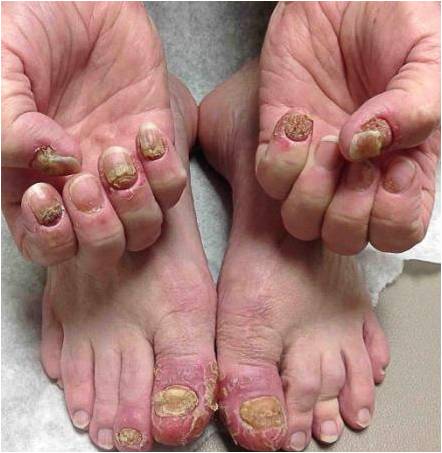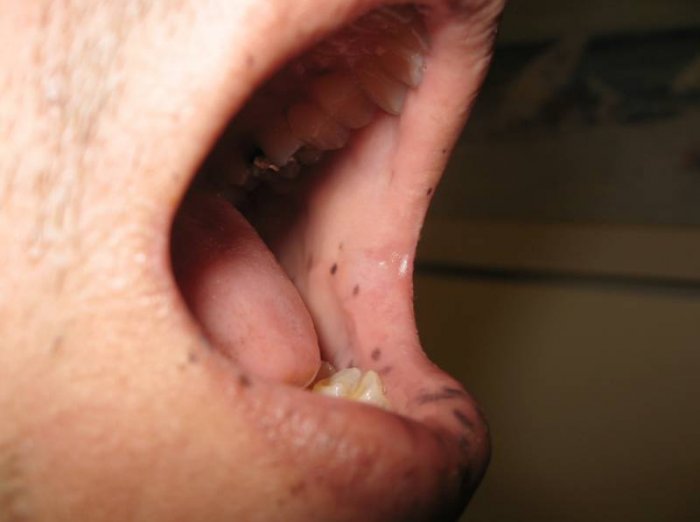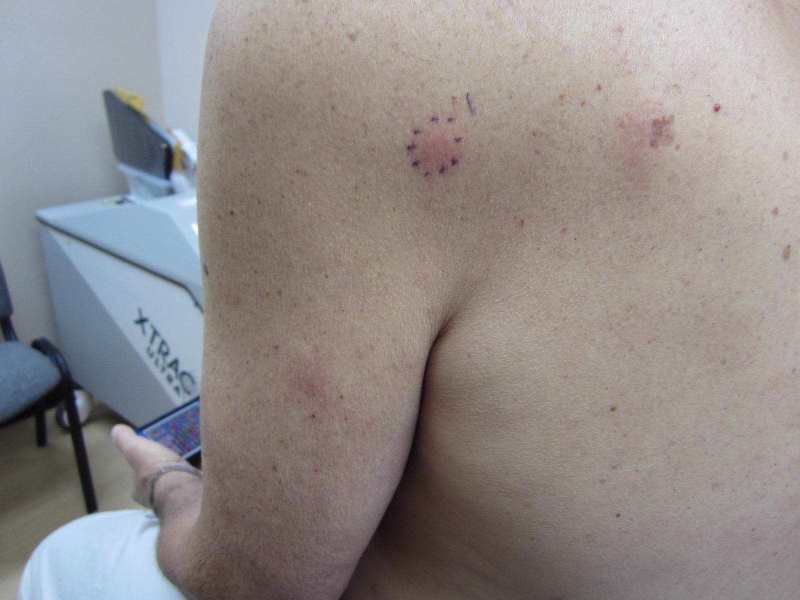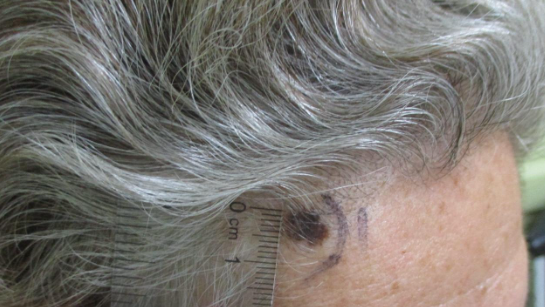Presenter: Caitlin Porubsky, DO, Carmen Julian, DO, Irina Milman, DO
Dermatology Program: PCOM Mednet/North Fulton Hospital Medical Campus
Program Director: Marcus Goodman, DO, FAOCD
Submitted on: July 29, 2016
CHIEF COMPLAINT: Changes in fingernails and toenails
CLINICAL HISTORY: A 65-year-old Caucasian female with a history of Ulcerative Colitis (UC) presented with nail changes on bilateral hands and feet. The patient started noticing nail changes about 18 months prior to presenting in the office. The patient previously saw a podiatrist, who performed nail clippings that showed onychomycosis. The patient was treated with a two-month course of oral itraconazole, yet her nail symptoms continued to worsen. Subsequently, 18 months prior the patient was started on infliximab for her UC. She continued on this therapy while nail changes progressed.
PHYSICAL EXAM:
The patient was found to have onycholysis, onychomadesis, and nail pitting of multiple fingernails and toenails. Also noted on the fingertips and nail folds were erythematous plaques with psoriasiform scale, crusting, and fissuring. The patient additionally had a solitary, erythematous plaque with mild silvery scale in the perianal region.

LABORATORY TESTS: N/A
DERMATOHISTOPATHOLOGY:
Psoriasiform dermatitis with neutrophils in the cornified layer. Negative periodic acid-Schiff stain.
DIFFERENTIAL DIAGNOSIS:
1. Onychomycosis
2. Trachyonychia
3. Drug-induced Onycholysis
4. TNF-alpha Inhibitor-induced Psoriasis




